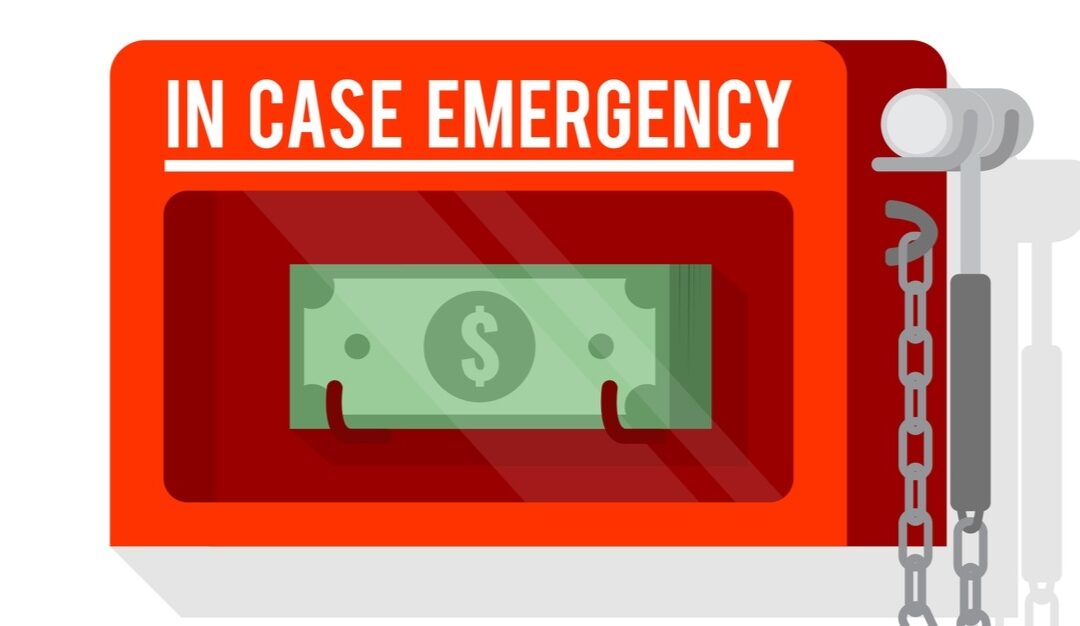The term “emergency fund” refers to money set aside for use in times of financial crisis. An emergency fund is intended to improve financial security by providing a safety net that can be used to cover unexpected expenses such as illness or significant home repairs.
An emergency fund is a savings plan that you can use if you have unexpected expenses or financial surprises. A well-stocked emergency fund can help you get through a crisis without taking out a loan or borrowing money from friends or family. An emergency fund can indeed help you manage a loss of earnings brought on by a long-term illness or job loss. Using funds set aside for unexpected bills can reduce the need for and costs associated with paying them with high-interest credit cards or personal loans.
Typically, emergency funds should have three to six months’ worth of expenses. Individuals should keep their emergency funds in easily accessible and liquidate accounts.
Tax refunds and other windfalls can be used to supplement savings.
A solid financial plan must include an emergency fund. It can assist you in paying unexpected expenses and avoiding additional debt from high-interest credit cards or loans.
An emergency fund can give you peace of mind by ensuring you will have money when an unexpected expense arises.
How Much Should You Save in Your Emergency Fund?
The appropriate size for an emergency fund is determined by several factors, including your financial situation, expenses, lifestyle, and debts. Individual circumstances may dictate the precise level of savings you are comfortable with.
Putting money aside can be difficult if you live paycheck to paycheck or get paid a different amount each week or month. However, even a small sum can provide financial security.
This amount may appear intimidating initially, but the idea is to save a small amount each week or two to build up to that goal gradually. You should also consider adjusting the amount based on your bill obligations, family needs, job stability, and other factors.
Keep your emergency fund separate from your regular checking account. If you keep your savings in a checking account, you may be tempted to spend them on non-emergency purchases.
High-yield savings account with easy access and a competitive yield is the best place to keep your emergency fund.Try to find financial institutions that are covered by the Federal Deposit Insurance Corporation (FDIC) or the National Credit Union Administration (NCUA) (NCUA).
Steps To Create an Emergency Fund
1.Make a plan
Determine the amount of money you want in your emergency fund. If you’re starting from scratch with your emergency fund, choose a first objective that feels manageable rather than overwhelming.Having a specific savings goal can help you stay motivated. Creating an emergency fund is an attainable goal that keeps you on track, especially when you’re just starting.
2.Make a system for sustained contributions.
There are numerous ways to save money, and one of the simplest is to set up automatic recurring transfers. You could also set aside a certain amount of money each day, week, or payday period. Aim for a specific amount, and your savings will grow even faster if you can afford to do more occasionally.
3.Keep Track of Your Progress
Check your savings balance regularly, such as every payday, to ensure that your deposits are correct and to celebrate your progress.
Make a habit of checking your savings account regularly. Whether it’s an automatic notification of your account balance or keeping a running total of your contributions, tracking your progress can provide gratification and encouragement to keep going.
Except in the case of an actual emergency, avoid using funds. When you use your emergency funds, plan to replenish them once the crisis has passed.
4.Increase your savings gradually.
Increase your contribution to your emergency fund by 1% or a specific amount each month until you’ve reached your savings goal. Unless you already have a sufficient emergency fund, at least a portion of any windfall should be used to add to it.
Some emergencies necessitate more than a six-month buffer. If you’re unemployed for more than a year or hospitalized for several months, you’ll be glad you have more money in your emergency fund.
Determine whether you have an emergency before using all or a portion of your emergency fund. Perhaps the expense can be postponed until you have had the opportunity to save.
If you need more clarification, refer back to your list of wants and needs. An emergency is a significant and unexpected need that is not covered by your current budget.


Recent Comments